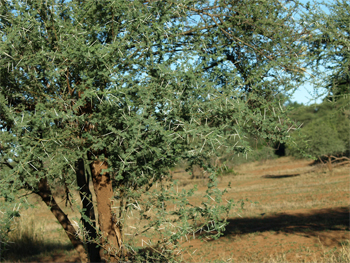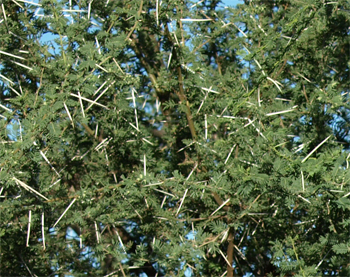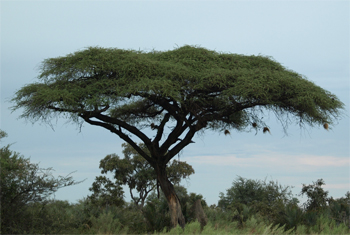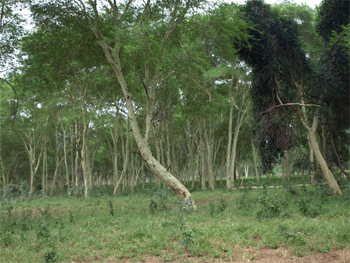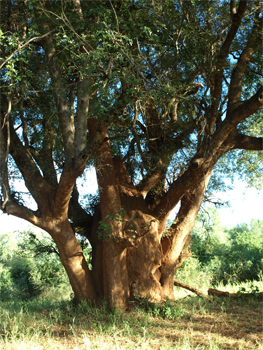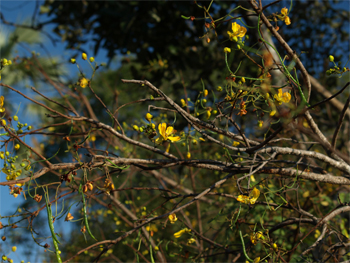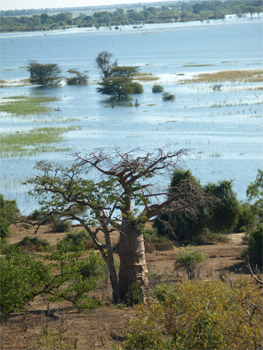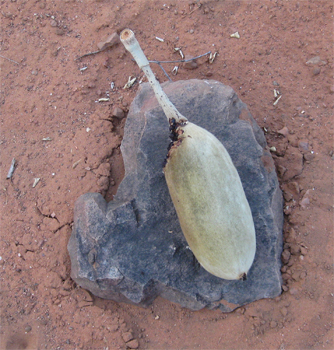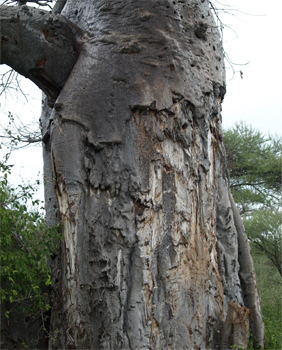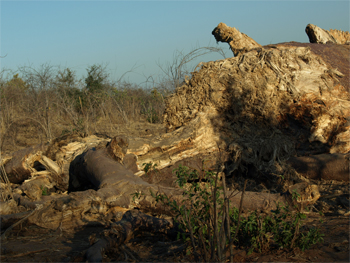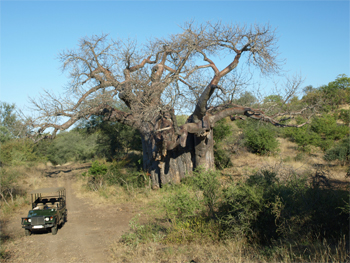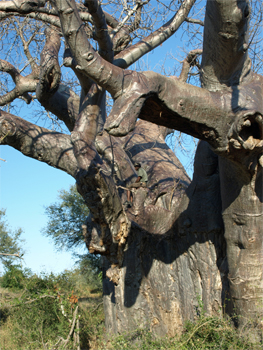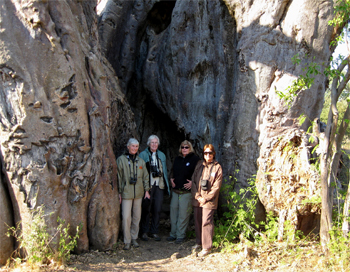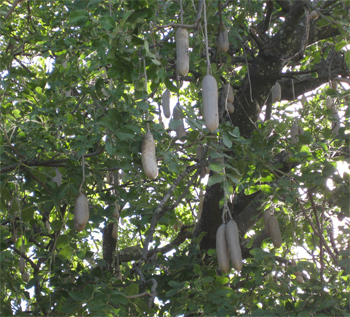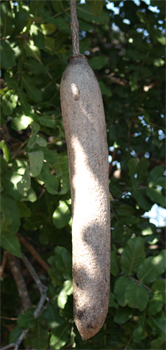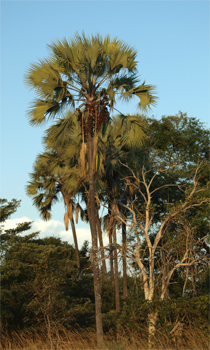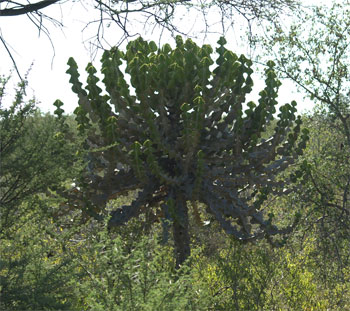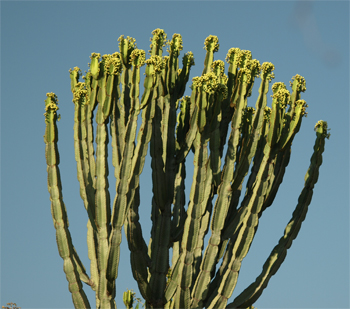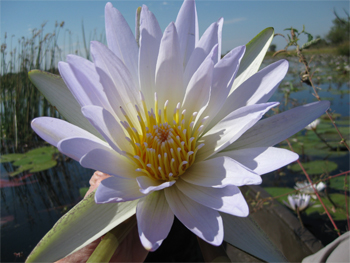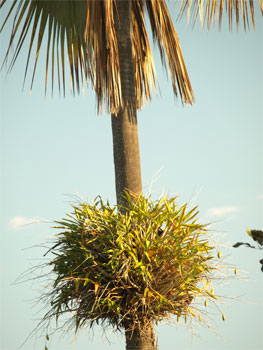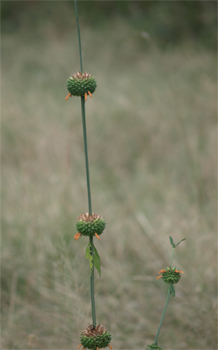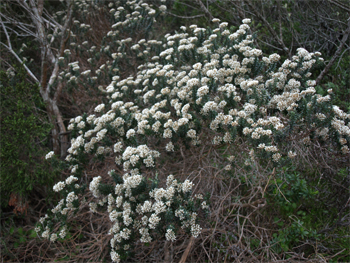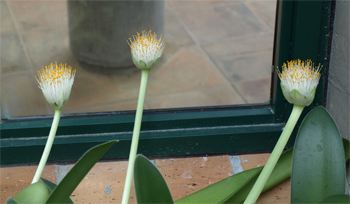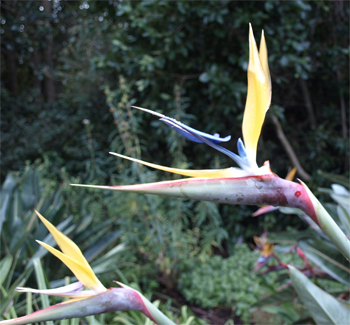Below is a table listing a few of the trees and flowers that we saw. The links are to the section where there will be pictures of these. Since it was late fall, early winter in southern Africa, there were not very many flowers in bloom. We were mostly in the savannah (grasslands, which were interesting) but we did see some forested areas. Most of he animals we saw like the more open areas - it is safer.
You will have to use the BACK arrow on your browser to return to wherever you were on the web page.
Candle-pod Acacia |
Fever Acacia |
Paper-back thorn Acacia |
Scrambled-egg Winter Acacia |
Tooth-pick thorn Acacia |
| Umbrella Acacia |
| African Paintbrush |
| Aloe ferox |
| Bird of Paradise |
| Lemon Orchid |
| Metalasia |
| Elegia Nuda Reeds |
| Candle Euphorbia |
The acacias are one of the more widespread tree species in southern Africa. There are many species. We were most impressed by the Tooth-pick thorn and Umbrella varieties.
Tooth-pick thorn Acacia |
You don't want to back into one of these!
|
Umbrella Acacia |
|
Fever Tree - Acacia
|
These trees are really beautiful when grouped together as in a forest.
|
Paper-back thorn Acacia |
Scrambled-egg Acacia |
Baobab trees are large, odd shaped, and legendary. A section in The Little Prince, Antoine de Saint Exupery's wonderful fairytale for adults, describes the baobab tree. For most of the year, the tree is leafless, and looks very much like it has its roots sticking up in the air. There are numerous legends offering explanations of how the tree came to be stuffed in the ground upside down, so it could no longer complain. There are also numerous superstitions amongst native African people regarding the powers of the tree. Anyone who dares to pick a flower, for instance, will be eaten by a lion. On the other hand, of you drank water in which the seeds have been soaked, you'd be safe from a crocodile attack.
Baobab and the Chobe River at Chobe National Park |
Baobab at Kruger NP |
Pod - the outside is soft and fuzzy
|
Open pod |
Baobab bark
|
Baobab tree after being "attacked" by elephants |
This Baobab is about 2500 years old |
If you look closely you can see our guide Trevor sitting on a branch in about the middle of the photo
|
The group dwarfed by the Baobab |
Another legend: "The baobab was among the first trees to appear on the land. Next came the slender, graceful palm tree. When the baobab saw the palm tree, it cried out that it wanted to be taller. Then the beautiful flame tree appeared with its red flower and the baobab was envious for flower blossoms. When the baobab saw the magnificent fig tree, it prayed for fruit as well. The gods became angry with the tree and pulled it up by its roots, then replanted it upside down to keep it quiet."
|
During our mokoro boat ride in the Okavango Delta, we say lots of beautiful water lilies, a real favorite of mine. Below are a few pictures.
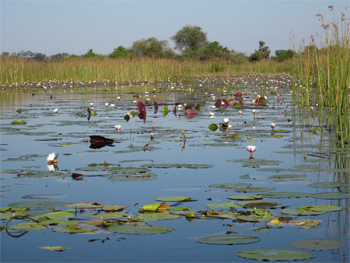 |
 |
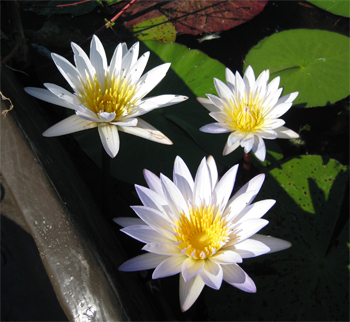 |
|
Lemon Orchid |
|
This is an unknown but it was pretty |
Closeup of the unknown
|
While we were in the Cape Town area, we saw a few interesting flowers.
Aloe Ferox
|
|
African Paintbrush |
Mandela Gold Bird of Paradise - named for Nelson Mandela
|
Elegia Nuda Reeds used to thatch house roofs
|
Thatched roof |
Return to Trips page to view other trips
| Return to Top | Return to Itinerary | Return to Dreamcatcher Home Page |
